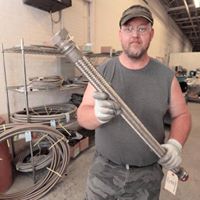Brian K Lapointe
age ~66
from South Dennis, MA
- Also known as:
-
- Brian La Oint
- Brian Lapoint
- Brian La E
- Phone and address:
-
5 Chandler Dr, South Dennis, MA 02660
5087789353
Brian Lapointe Phones & Addresses
- 5 Chandler Dr, South Dennis, MA 02660 • 5087789353
- Miami, FL
- 25 Cottage Dr, West Yarmouth, MA 02673
- W Yarmouth, MA
- Rockport, MA
- Dennis, MA
- Danvers, MA
- 5 Chandler Dr, South Dennis, MA 02660
Name / Title
Company / Classification
Phones & Addresses
L & L SERVICES, LTD
USA Turtle, LLC
Mfg Surgical Appliances/Supplies
Mfg Surgical Appliances/Supplies
5 Chandler Dr, South Dennis, MA 02660
8777697746
8777697746
Us Patents
-
Jumping Device Having A Flexible Tether And Method Of Using The Jumping Device
view source -
US Patent:6346065, Feb 12, 2002
-
Filed:Jun 6, 2000
-
Appl. No.:09/587767
-
Inventors:Brian Lapointe - Rockport MA
-
Assignee:Cal-Side (USA), Ltd. - Portland OR
-
International Classification:A63B 2508
-
US Classification:482 77, 472135
-
Abstract:A jumping device having a high rebound platform, a flexible tether operatively connected at a first end thereof to the high rebound platform, and a handle located on the tether. A method of jumping, including providing a jumping device having a high rebound platform, a flexible tether operatively connected at a first end thereof to the high rebound platform, and a handle on the tether, mounting the jumping device by placing a users foot on the high rebound platform, grabbing the handle, pulling the handle away from the high rebound platform, and jumping so that the high rebound platform alternates between compressed and uncompressed states.
-
Backpack Rear Portion
view source -
US Patent:D457305, May 21, 2002
-
Filed:May 11, 2000
-
Appl. No.:29/123115
-
Inventors:Jill Greene Ammerman - Beverly Farms MA
Brian Lapointe - Rockport MA -
Assignee:Airpacks, Inc. - Beverly MA
-
International Classification:0301
-
US Classification:D 3216
-
Bubble-Making Toy Having Multiple Compartments
view source -
US Patent:6447356, Sep 10, 2002
-
Filed:Jun 22, 2000
-
Appl. No.:09/602365
-
Inventors:Brian Lapointe - Rockport MA
-
Assignee:Prime Time Toys Ltd.
-
International Classification:A63H 3328
-
US Classification:446 16, 446 15, 446 74, 446267
-
Abstract:A bubble-making toy provides a container structure having a main compartment for containing bubble solution and an outside compartment within which a bubble forming ring can be positioned. The main compartment and outside compartment can be opened to one another by way of a valve so that the bubble forming ring can be brought within the bubble solution and where the main compartment and outside compartment can be closed to one another during bubble generation by a user. Such a bubble-making toy reduces the possibility of bubble solution spillage during non use or storage of the bubble-making toy and during the time of bubble generation. Moreover, the design allows easy access of the bubble forming ring to the bubble solution. The provision of an adequately sized outside chamber also advantageously permits a bubble ring with a filling of bubble solution to be shielded until the time when a user intends to create a bubble. An actuator connected with the bubble forming ring is easily manipulated by a user that be used in opening and closing the valve provided between the main compartment and the outside compartment.
-
Foam Trajectory Toys
view source -
US Patent:6500042, Dec 31, 2002
-
Filed:Jul 7, 2000
-
Appl. No.:09/611797
-
Inventors:Brian K. LaPointe - West Yarmouth MA
-
Assignee:Cal-Side (USA) Ltd. - Portland OR
-
International Classification:A63H 2700
-
US Classification:446 64, 124 203
-
Abstract:The projectile toy includes an elongate projectile member having a body portion connected to a nose portion. The body portion has a rigidifying structure, and the nose portion is made of a unrigidified foam. A hook device is connected to the body portion near the nose portion. An elastomeric tether for engaging the hook device can be stretched and released causing the projectile member to launch with the nose portion in front.
-
Parachute Toy
view source -
US Patent:6503119, Jan 7, 2003
-
Filed:Jan 4, 2002
-
Appl. No.:09/683476
-
Inventors:Brian Keith Lapointe - West Yarmouth MA 02673
-
International Classification:A63H 2700
-
US Classification:446 34, 446 49, 244138 R, 244142, 244145
-
Abstract:A rectangular shaped parachute toy, designed to suggest a modern day parafoil, but constructed with a single fabric layer canopy, for simplicity and more rapid opening of the chute. This invention, incorporates the use of two oversized shrouds, each leading up to a section of lightweight mesh, which distributes the forces that each shroud imparts on the canopy, and thereby offers a child an easy to use parachute toy, that is nearly impossible to tangle, a problem commonly found in most parachute toys. The rectangular shape of the canopy and offset attachment of the shrouds results in a parachute toy, which is directional and easy to control. As the parachute descends, it travels forward in the direction that the figure is facing and turns in the direction of a shortened shroud.
-
Bouncing Device
view source -
US Patent:6523280, Feb 25, 2003
-
Filed:Feb 15, 2002
-
Appl. No.:09/683800
-
Inventors:Brian Keith Lapointe - West Yarmouth MA 02673
-
International Classification:A43B 310
-
US Classification:36 78, 36132
-
Abstract:A lightweight bouncing sandal for youths, comprising a tough thin bottom layer, which is durable enough to withstand repeated scuffing and impacting with the ground and has an exposed textured surface to provide traction and reduced slipping when wet, a middle resilient layer of sufficient size and thickness to support a seventy-five pound load without compressing fully, a top confronting layer of semi-flexible material, with sufficient thickness and rigidity to support a two and one half pound per square inch load without distorting, with at least one elastic strap permanently affixed at its ends, such that it lays flat against the top layer without slack in a relaxed state, with an asymmetrically curved base to aid the user in maintaining balance while running, jumping or walking.
-
Air Pressure Projectile Launcher
view source -
US Patent:6997770, Feb 14, 2006
-
Filed:Oct 22, 2004
-
Appl. No.:10/904104
-
Inventors:Brian Lapointe - West Yarmouth MA, US
-
International Classification:A63H 27/127
-
US Classification:446 39, 446231, 124 66
-
Abstract:An air pressure projectile launcher toy comprising at lease one soft foam projectile and a telescopic tube assembly, adapted on one end for releasably securing a projectile, and capable of generating a high speed compressed air stream, which is buffered by a large available air volume, intended to accelerate lightweight foam projectiles without generating an undesirable shock wave, caused by the rapid build-up of high internal pressures, thereby making it possible for children to launch safe foam projectiles with less effort and increased accuracy.
-
Foam Projectile Exhibiting An Illuminating Element
view source -
US Patent:7108576, Sep 19, 2006
-
Filed:Feb 13, 2004
-
Appl. No.:10/778972
-
Inventors:Brian LaPointe - West Yarmouth MA, US
-
Assignee:Poof Products, Inc. - Plymouth MI
-
International Classification:A63H 27/127
A63B 67/06 -
US Classification:446 47, 446175, 446219, 473570
-
Abstract:A projectile adapted for being discharged from a suitable firing device such as a gun, slingshot, cannon and the like. The device includes a three-dimensional shaped body constructed of a foam material and which may include such as a disc shaped, conical arrow shape or spherical ball shape. A plurality of LED lighting elements are supported within the foam material body at specified locations and are visible from a surface of the body. A battery is supported within the body and electrically communicates the LED lighting elements. A switch accessibly is located upon the body and selectively engages or disengages the battery with the lighting elements and in order to provide an illuminating effect to the projectile as it is discharged from the device.
Resumes

President
view sourceLocation:
South Dennis, MA
Industry:
Consumer Goods
Work:
Great Original Designs
President
President
Education:
Worcester Polytechnic Institute
Worcester State College
Worcester State College
Certifications:
Phd

Owner, Great Original Designs
view sourceLocation:
5 Chandler Dr, South Dennis, MA 02660
Industry:
Design
Work:
Great Original Designs
Owner, Great Original Designs
Owner, Great Original Designs
Languages:
English

Senior Drafter
view sourceLocation:
1342 4Th St south, Safety Harbor, FL 34695
Industry:
Architecture & Planning
Work:
Williamson Dacar Associates
Senior Drafter
Senior Drafter
Education:
Somersworth High School
Nhti - Concord's Community College
Associates, Associate of Arts, Engineering
Nhti - Concord's Community College
Associates, Associate of Arts, Engineering
Languages:
English

Brian Lapointe
view source
Brian Lapointe
view sourceWork:
Boston Bartender's School Licensed
Boston, MA
Jan 2014 to Present
Master Honda Technician
Boston, MA
Jan 2014 to Present
Master Honda Technician

Brian Lapointe Margate, FL
view sourceWork:
MCNA Dental
Jan 2012 to 2000
SIU Coordinator L&W Investigations
2010 to 2000
Corporate Quality Control / Case Manager ICS Merrill
2007 to 2010
SIU Lead Investigator / Case Manager ESPG, Inc
Carver, MA
2005 to 2007
Operations Manager Knights of Columbus
Carver, MA
2004 to 2005
Life Insurance Agent RSight / Intel Group
2002 to 2004
Private Investigator Rent-A-Center
Kissimmee, FL
1999 to 2002
Store Management Trace Investigations/ D.A. Johnson & Assoc
Boston, MA
1998 to 2001
Private Investigator United States Marine Corps
1993 to 1996
Supply Administration
Jan 2012 to 2000
SIU Coordinator L&W Investigations
2010 to 2000
Corporate Quality Control / Case Manager ICS Merrill
2007 to 2010
SIU Lead Investigator / Case Manager ESPG, Inc
Carver, MA
2005 to 2007
Operations Manager Knights of Columbus
Carver, MA
2004 to 2005
Life Insurance Agent RSight / Intel Group
2002 to 2004
Private Investigator Rent-A-Center
Kissimmee, FL
1999 to 2002
Store Management Trace Investigations/ D.A. Johnson & Assoc
Boston, MA
1998 to 2001
Private Investigator United States Marine Corps
1993 to 1996
Supply Administration
Education:
Bryant College
Smithfield, RI
1996 to 1998
marketing
Smithfield, RI
1996 to 1998
marketing

Brian Lapointe
view source
Brian Lapointe
view source
Brian Lapointe
view source
Brian Lapointe
view source
Brian K. Lapointe
view source
Brian Lapointe
view source
Brian LaPointe
view source
Brian Lapointe
view sourceNews

Study clearly identifies nutrients as a driver of the Great Atlantic Sargassum Belt
view source- McGillicuddy and co-author Brian Lapointe also stressed the importance of the interdisciplinary and collaborative nature of this research, which encompasses a number of disciplines including biology, chemistry, and physics.
- Date: Oct 11, 2023
- Category: Science
- Source: Google

Scientists agree: Fla. lake discharges, not septic systems, cause algae blooms
view source- "There's no challenging the fact that the algae is coming from Lake Okeechobee," said Brian Lapointe, a research professor at Florida Atlantic University's Harbor Branch Oceanographic Institute in Fort Pierce. "The lake is the biggest single source of the blue-green algae bloom in the St. Lucie Rive
- Date: Jul 11, 2016
- Category: Sci/Tech
- Source: Google
Classmates

Brian Lapointe
view sourceSchools:
Reingold Elementary School Fitchburg MA 1982-1988
Community:
Stephanie Fiore, Liberty Dudley, Moriarty Heidi

Brian Lapointe
view sourceSchools:
Prince George Secondary High School Prince George Saudi Arabia 1963-1967
Community:
Corinne Desgagne, Charlene Ellis

Brian Lapointe
view sourceSchools:
Foxcroft Academy Dover Foxcroft ME 2001-2005
Community:
Sheri Bonay, Paul Skip, Cathy Carstensen, Rhonda Phillips

Brian LaPointe
view sourceSchools:
Beekmantown Central School Plattsburgh NY 1987-1991
Community:
Melissa Barcomb, Jason Finley, Jason Duquette, Casey Castine, Shawn Morrison, Deborah Rasberry, Ricky Sears, Laura Knef, Sandra Hoffpauir, Karra Lamora, Tricia Tyrell

Reingold Elementary Schoo...
view sourceGraduates:
Brian Lapointe (1982-1988),
Cynthia Deery (1969-1973),
James Leblanc (1974-1976),
Mark Kenney (1979-1984)
Cynthia Deery (1969-1973),
James Leblanc (1974-1976),
Mark Kenney (1979-1984)

Tide Head School, Campbel...
view sourceGraduates:
Brian Lapointe (1969-1973),
Carolyn Williamson (1972-1973),
Polly McDavid (1971-1977),
Maxine MacMillan (1956-1964)
Carolyn Williamson (1972-1973),
Polly McDavid (1971-1977),
Maxine MacMillan (1956-1964)

Central Florida Community...
view sourceGraduates:
Brian LaPointe (2003-2004),
Debbie Davis (1995-1998),
Sam Mansfield (1973-1976),
Barbara Jefferson (1985-1988)
Debbie Davis (1995-1998),
Sam Mansfield (1973-1976),
Barbara Jefferson (1985-1988)
Myspace
Youtube
Googleplus

Brian Lapointe
Education:
Hadley high school

Brian Lapointe

Brian Lapointe

Brian Lapointe

Brian Lapointe
Work:
MCNA Dental - SIU Coordinator
Flickr
Get Report for Brian K Lapointe from South Dennis, MA, age ~66
















